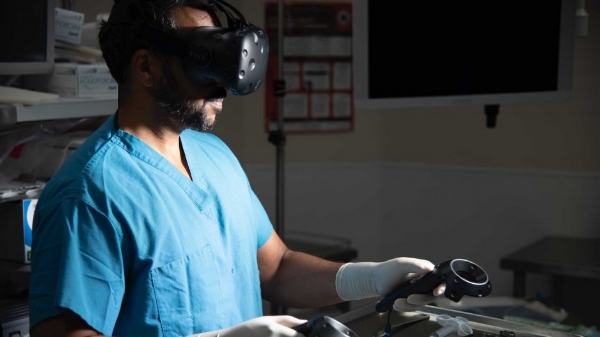Come meet LusoVU at our upcoming VR/AR Global Summit Europe.
More info and sign up here
Get ready for the VR/AR Global Summit in Europe in 2019 that will highlight top leaders and innovators including Augmented Reality smartglassss #vrarags @esa @thalesgroup @Airbus #lusospace #vrara #tech #innovation #europe pic.twitter.com/8I7zZl6DMt
— VR/AR Association VRARA (@thevrara) November 21, 2018
LusoVU’s mission is improve life by connecting people beyond the human senses and to be the catalyzer of the new human interaction paradigm.
LusoVU develops AR solutions, using a unique and innovative technology. LusoVU continues its work on natural human interfaces; haptic interface (in a very simplistic way, hands movements) or eyetracking (eyes movements). These technologies will allow for a whole new way for humans to interact with the virtual world.
LusoVU is developing AR smartglasses, uniquely elegant with a huge field of view. The smartglasses characteristics include:
Lightness The hI-DO concept will reduce drastically the overall mass of any head mounted display that will use this technology.
Comfort With reduced mass comes physical comfort. The larger field of view will also bring eye comfort. The fact that this solution can be embedded into corrective lenses will also bring added comfort to users of prescription glasses. And comfort is a key characteristic for ubiquity.
Elegance With very thin lenses, head mounted displays using the hI-DO technology will be as elegant as a normal pair of glasses or sunglasses.
Usefulness The hI-DO will allow AR to become omnipresent in our lives. Head mounted displays, opposed to mobile phones or tablets, are wearable hands-free devices. As such they will unleash all the Augmented Reality potential which in turn will originate a series of new applications and uses for this new breed of eyewear.
New interactions LusoVU continues its work on natural human interfaces. Be it haptic interface (in a very simplistic way, hands movements) or eyetracking (eyes movements) these technologies will allow for a whole new way for humans to interact with the virtual world.
Large field of view While using any head mounted display, the sensation of immersion on a virtual or virtually increased world is directly related to the device’s field of view. The major breakthrough coming out of the hI-DO technology is certainly the very large field of view. While initially set to be 70 by 50 degrees, theoretically it can as big as one wants.
LusoVU is a Portuguese startup, founded in 2013 as a spin-off of LusoSpace, a company specialized in satellites components, which operates since 2002. It has prominent clients such as the European Space Agency.
More about LusoSpace
LusoSpace is a private space company composed by multidisciplinary highly qualified engineers on physics, electronics, optics and mechanics. LusoSpace’s vision is to lead the space sector in Portugal. Furthermore, LusoSpace aim to develop terrestrial applications which result from the space experience and its success.
Since its first year of activity, LusoSpace has been in the front line of technological innovation. Being the first Portuguese company to fly critical space hardware, we are proud to be a national reference for the society. Our skills were demonstrated by establishing a high tech company in the space sector, without strong initial investments or corporate support.
Main customers are ESA - European Space Agency, EADS-Astrium and Thales Alenia Space. ESA is the major european entity driving for new developments in the space sector. EADS - Astrium and Thales Alenia Space are the main european satellites manufacturers driving the space sector as a commercial activity.










